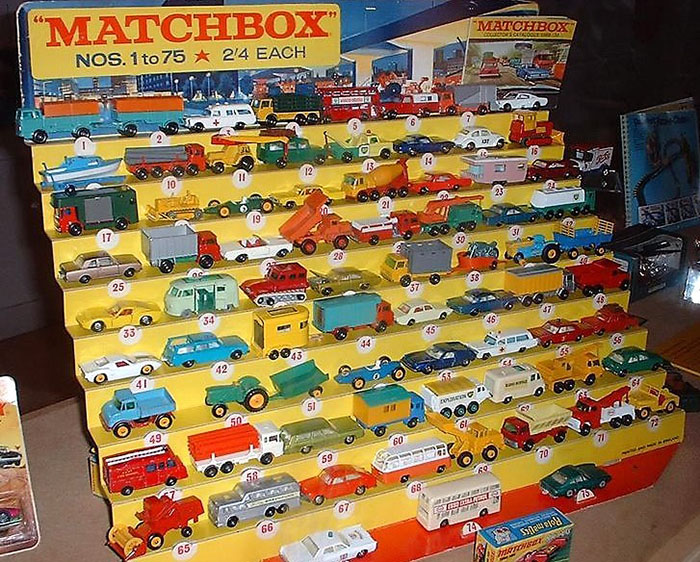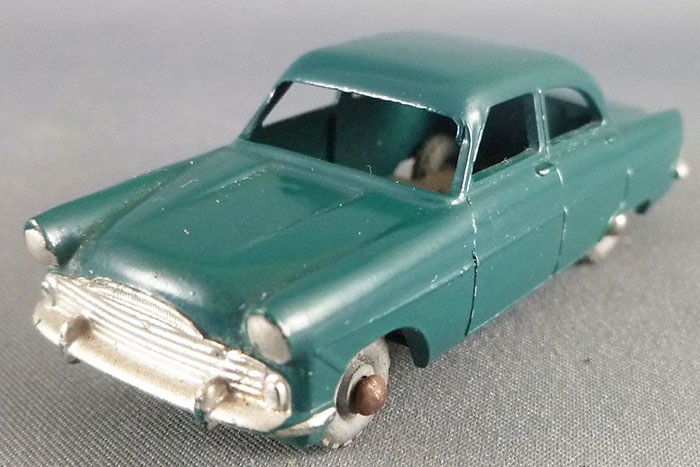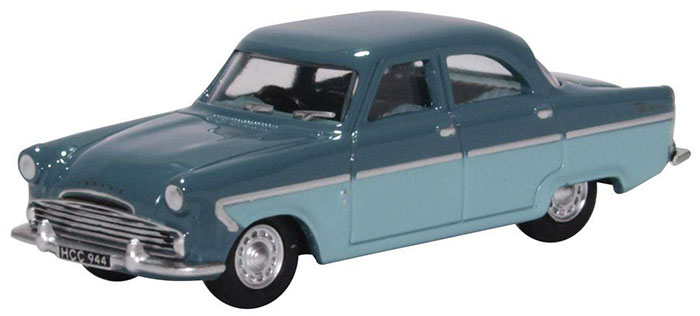

 TERRY SMITH takes a personal look at the history of the smaller diecast model vehicle.
TERRY SMITH takes a personal look at the history of the smaller diecast model vehicle.

These Matchbox display stands would appear not only in toyshops, but often in places that would seem boring to a child, like Post Office windows. This display is from around 1967 judging by some of the cars.
If you are the same age as me, some of your earliest memories will be of gazing longingly into toy shop windows from your pushchair, trying to get your mum to buy you the latest Lesney Matchbox - or if you were being extra pushy Dinky or Corgi model.
Matchbox cars were available in a lot more stores than the bigger scaled cars and were usually displayed on their own stepped shelving. It was kind of exciting to see the range of seventy-five different cars change as models were dropped and new ones took their place, with every new release incorporating some new feature. I saw them go from a diecast body and chassis with two axles and four diecast wheels, through to getting plastic windows and interiors, separate plastic tyres and working parts such as doors and bonnets. Of course, the larger cars from other manufacturers were even better and came with even more features - revolving hidden headlamps on the 1963 Corvette Stingray and a crude early version of fibre-optics to give the 1964 Buick Riviera working headlamps. Both of these were from Corgi. By the mid-1960s, there was no doubting that the production of diecast toy cars was a huge business in the UK, employing many 1000s of people. So where did it all go wrong?

This is a Lesney produced Matchbox Ford Zodiac MkII from around 1960. It comprised just eight metal components.
To be fair nothing went wrong - it was just a gradual change in the buying sector of mainly younger boys, who were being lured away by other things to spend their pocket money on. Another issue that has reared its head in recent years is the prickly subject of licencing. I would have imagined that in the past manufacturers were pleased that toy companies made representations of their motor vehicles. I guess they were thinking if a boy plays with a toy of a certain brand, he might want to aspire to own one when he was older. This thinking has sadly changed over the last 20 years with the car companies or their marketing agents demanding fees from anyone who dares to make a model of their products. This is what I believed changed what was originally a small boy's toy into an adult's collectable model car.
The larger scale 1:43 and 1:18 diecast collectors had been well looked after over the years with the likes of Corgi even returning to produce highly collectable models in the smaller of these two scales - however even up to the turn of the millennium, apart from Hot Wheels there was not much available in the scale that used to be the domain of Matchbox. Okay, to be clear Matchbox were never made to any particular scale, it was more about what fitted inside the box; but they were the closest the OO railway scale (1:76) and of course this is where many of them ended up - on layouts.
However, when you look back to ranges like Matchbox, they were appealing to a younger target audience, so you were not going to find cars like the Ford Fiesta or Morris Marinas in the range. Street scenes on model railway layouts could not be made up of just Ford Mustangs or the latest Italian supercar! Corgi touched on it around the year 2000 with some OO Scale small white vans that you could paint yourself but dropped the ball. I remember quite clearly their sales rep telling me that they felt there was no market for highly detailed diecast light commercials or cars in 1:76 scale, even though they were already producing wonderful models of trucks and buses.

Fast Forward sixty years and here we have a Ford Zodiac from Oxford Diecast. The company has done wonders to people’s model rail layouts by supplying period correct OO scale vehicles like these.
This gap in this market was first filled by Pocketbond, who managed to get some quite nicely detailed models of period vehicles like Morris Minors made out in China and sold here as the Classix range. But it was Oxford Diecast who just a couple of years later really picked up on this overlooked segment and of course today are the largest supplier of 1:76 diecast model vehicles in the world.